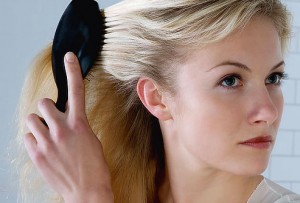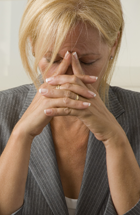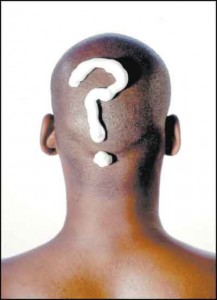27.11.2012
in COMBAT HAIR LOSS
HAIR GROWTH – THE NEGATIVE FACTORS

In the first group, the “Negative Effect” group, we have already mentioned the obvious systemic problems that will have an important influence. You must, of course, be fit and well but conditions such as anaemia, over or under active thyroid, or polycystic ovaries, for example, will have a serious adverse effect on hair growth and must be diagnosed and treated without delay. Anaemia may be caused partially by dietary deficiencies, giving rise to low iron and ferritin levels, particularly common in people who do not eat red meat and do not take the necessary “B Group” vitamin supplementation, particularly B12. You do not need to be clinically anaemic before low iron levels in the body will reduce your hair growth rate.
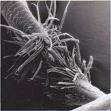
The trace elements present in minute quantities in the body but essential catalysts for the operation of the chemical network, must all be present, even arsenic is now thought to be an essential trace element. The macro elements (calcium, magnesium and phosphorus), the elements present in larger quantities used in the production of bone and other tissue must of course be present in the optimum quantities. All the vitamins (from A to U) must also be present in the body at the recommended level (especially vitamins A, B group vitamins, vitamin C, and vitamin H for hair and skin growth). They are all vital for normal body processes. The body cannot synthesise any of these elements or minerals; they must all come from the food we eat. Likewise with the vitamins, they must almost all come from the food we eat; only a few can be synthesised by the body. Restricted diets, slimming courses and poor nutrition can very quickly lead to specific deficiencies and consequent hair and skin problems. Nutritional problems are by no means confined to Third World countries and many modern sophisticated clinics see cases of nutritional deficiencies. To eat well may seem blindingly obvious, but without a healthy, varied diet, which includes quantities of fresh fruit and vegetables, your hair and skin will not be at their best. If you have any doubt, arrange a blood test or a mineral hair analysis for these levels to be checked.
Just as deficiencies in certain agents will have an adverse reaction, so does the introduction of unwanted agents, especially toxins, into the blood stream. Smoking, excess alcohol, and most induced chemicals (drugs of abuse) will have a serious, adverse affect on hair and skin growth.

Chemotherapy is an extreme example of a severe toxin introduced deliberately into the blood stream to fatally affect the mutant cancerous cells present. The collateral damage to the rest of the body is considerable including (least importantly of all) the hair follicles, which, in response to the severe toxic trauma, immediately and synchronously, stop growing, even though they are in the growth (anagen) phase.
The resultant “anagen effluvium” (total hair fall) results in immediate cessation of hair growth; the now non-growing hairs are held in the follicles for a further short period before being shed to produce temporary total baldness. New hair growth is already activated in the hair follicle and the new hair synchronously re-grows back to its normal position, although the texture and colour of the hair may have been affected by the severe trauma.
Many drugs are of course introduced into the blood stream for their therapeutic effect and these pharmaceutical agents, whilst performing their primary task for which they were prescribed, will also disturb the existing delicate hormone balance to some extent, i.e. they will have side effects. This secondary action, the side effects, is usually negative, but not always and the treatment of high blood pressure with Minoxydil in the 1970s produced not only hirsute women (women with excess hair growth in the male pattern) but re-growth of vellus hair on the bald scalps of men suffering from Androgenic Alopecia, a feat which up until then was thought to be impossible and precipitated an enormous jump in research and development of drugs for the treatment of common baldness.
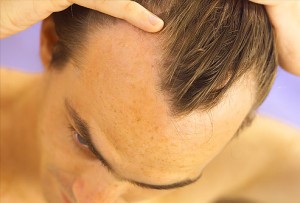
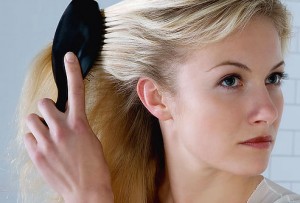
There are other systemic conditions of a more insidious nature, such as Alopecia Areata, a partial failure of the auto-immune system of unknown cause or origin, although stress, which has the effect of raising hormone levels, is implicated. The white blood cells of the body attack the healthy hair follicles causing breakage and loss of hair in the characteristic coin-shaped patches. The mechanism, although much studied, is not well understood, and there is now thought to be a genetic influence in this condition. A high percentage of Down’s syndrome children suffer from Alopecia Areata.
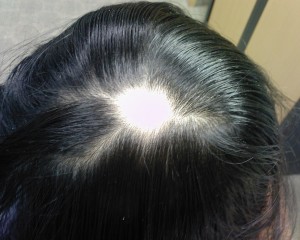
Systemic problems are the second biggest group of factors involved in hair loss, after the leading genetic group of influences and many serious conditions, secondary syphilis, lupus, HIV, etc., first appear as dermatological problems of the hair and scalp.
Do you have Hair Loss Problems, read our Hair Loss Help













